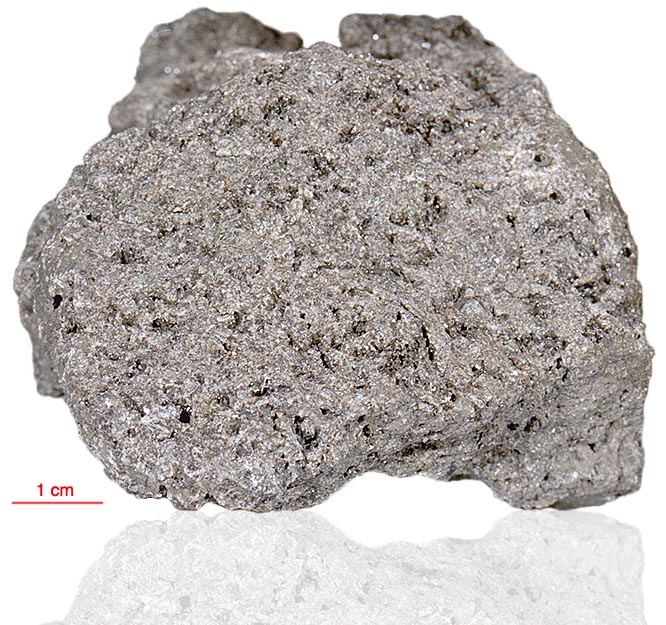
Fact sheet
71565, 71566 and 71567 are coarse-grained, plagioclase-poikilitic ilmenite basalts that were collected as rake samples. They have vugs and vesicles and contain aggregates of ilmenite and pyroxene. Plagioclase plates are intergrown with pyroxene. Large pyroxene grains are sector-zoned and enclose ilmenite and resorbed olivine. Pyroxene zoning includes pigeonite. Minor minerals include zirconolite, tranquillityite, armalcolite, baddeleyite and blebs of metallic iron. Large crinkled areas of cristobalite can be found in the interstices (three large crystals in rotation 1 and a few small patches in rotation 2).
The sample weighed 415.4 grams before analysis and has not been dated.
Further details of this and other Apollo samples are here: http://curator.jsc.nasa.gov/lunar/
Circular features with orange rims are artifacts.
Apollo 17, the final manned landing mission, had two objectives: to obtain samples of ancient rocks from the lunar highlands and to look for evidence of younger volcanic activity on the valley floor.
This small Collection contains material deriving from both periods, including igneous rocks around 4.3 billion years old from the lunar highlands as well as younger volcanic samples dating from about 3.6 billion years ago.
Apollo 17 was launched on 7 December 1972.






